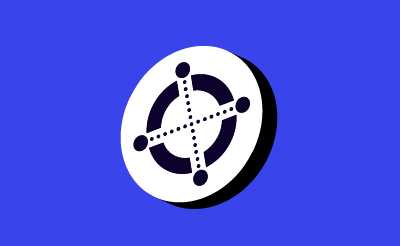Enjin
Enjin Coin provides an ecosystem of interconnected, blockchain-based gaming products.
What is Enjin?
- Founded in 2009, Enjin has roots in the gaming industry, with the company’s first product, a gaming community platform called the Enjin Network, growing to 20 million users over the course of a decade.
- Enjin Coin is a project of Enjin, a company that provides an ecosystem of interconnected, blockchain-based gaming products. Enjin’s flagship offering is the Enjin Network, a social gaming platform where users can create websites and clans, chat, and host virtual item stores.
- Enjin Coin is an Ethereum-based cryptocurrency using ERC-1155 and was designed to be a gaming token. Items of games on the Enjin platform can be traded and created on the NFT through the minting process. In addition, all items can be converted back to Enjin coins as well.
- Enjin Coin can be created as a custom coin on the Enjin platform through Mint Smart Contract on the blockchain which can be both game items and currency to buy gaming items and permission tokens. Each custom coin is backed by an Enjin coin.
Key Metrics
| Ticker | ENJ |
| Token Name | Enjin |
| Token Type/Protocol | ERC-20, ERC-1155 |
| Total Token Supply | 1,000,000,000 ENJ |
| Current Circulating Supply | See Coinmarketcap |
| Market Capitalisation | See Coinmarketcap |
| Token Creation Date | July 2017 |
| Can it be mined? | Yes |
Who is behind Enjin?
Enjin token was created by Enjin Company, a gaming firm founded in 2009 by Witek Radomski and Maxim Balgov. Later in 2017, the company underwent an ICO of Enjin token initially for Non-fungible Token (NFT).
Blagov has described himself as having experiences in creative direction, marketing, and software project management and design.
What is the purpose of Enjin?
Enjin aims to create a transparent and secure online gaming community. It also aims to offer software products that make it easy for everyone to develop, trade, monetize, and market with blockchain.
Insights:
- Enjin is an ERC-1155 token on smart contract which the Enjin team had developed by combining the features of ERC-20 and ERC-721. Since neither ERC-20 nor ERC-721 encourages gaming application, ERC-1155 supports this group of users as Enjin can be used to create unlimited fungible and non-fungible (Digital artwork, cards) assets on one single blockchain.
- Enjin saw an opportunity to develop NFT (Non-fungible Token) as there is currently no ecosystem supporting NFT, and gas fees of Ethereum are expensive. Therefore, Enjin had initiated a project called Efinity, creating a NFT blockchain on Polkadot Network (A private and public network provider).
- Enjin had launched Jumpnet, a private blockchain on Ethereum using Proof of Authority (PoA) which is secured by the validating nodes. This algorithm introduces a faster transaction and the details of Jumpet are as follows:
- Enjin coins can be easily transferred from Ethereum to JumpNet.
- No fee when transfering Enjin tokens on ERC-1155
- ENJ token can be minted with no cost.
- ENJ token and other ERC-1155-based tokens can be transferred via QR code.
Risks:
- As 83% of Enjin coins are already in circulation, this may cause a coin shortage in the future leading to a higher price. Also, the community will be affected because users will be unable to purchase items, as the price will be high or the items will be lacking, due to Enjin coin conversion for speculation.
- The road map of Enjin might be changed as a result of some big projects of Enjin such as Efinity, a $18.9M project for Polkadot-based NFT blockchain which can lead to a lack of credibility among investors.
News and Updates:
- Enjin raises $18.9M funding to launch the NFT blockchain on Polkadot. Enjin is therefore developing a token called Paratoken which allows a token from any blockchain to be transferred to the Efinity network and then used throughout the Polkadot ecosystem.
- Enjin will work with JumpNet and Efinity developers to move to carbon-neutral nodes by 2030 as follows
- Reduce Electricity Consumption: JumpNet uses Proof of Authority blockchain which uses a total of four nodes consuming an average of 30 million watts of electricity per year. While Efinity uses Proof of Stake blockchain that is governed by approximately 1,000 nodes consuming approximately four trillion watts annually. It is obvious that Enjin largely uses less electricity than other tokens.
- Reduce Carbon dioxide: The fashion industry currently emits about two billion tons of carbon dioxide per year for production. Therefore, Enjin has proposed a solution by integrating blockchain technology with AR (Augmented Reality) and VR (Virtual Reality) to create a Digital Fashion to reduce carbon dioxide. For instance, Fabricant has partnered with Enjin to bring Digital Fashion in 3D and animation on the blockchain. Also, Fabricant will work together with several well-known brands such as Puma, Buffalo London to produce NFT products.
Community & Whitepaper Links:
Official Website: https://enjin.io/
White Paper: https://efinity.io/whitepaper/company
Disclaimer:
All investment is speculative and involves substantial risk and uncertainty. Investors should understand the nature of digital assets including the terms of return and the risk of assets. We encourage investors to fully understand the assets and the risk associated with them prior to making any investment.



